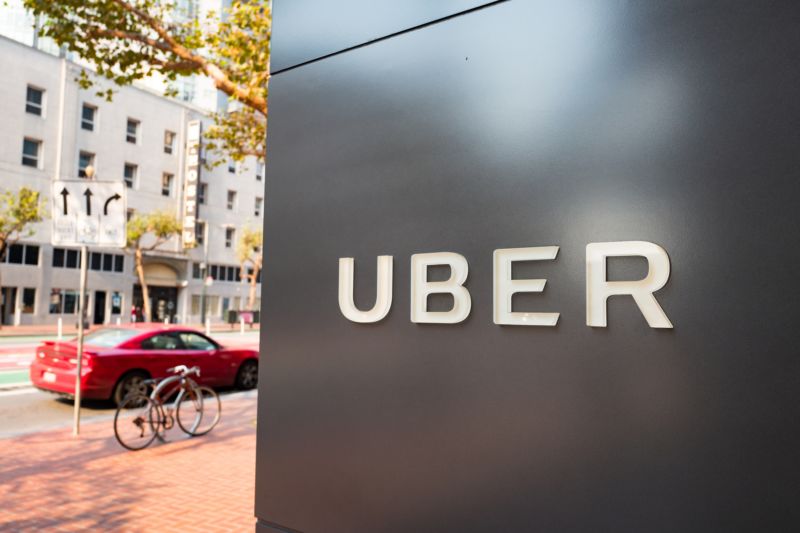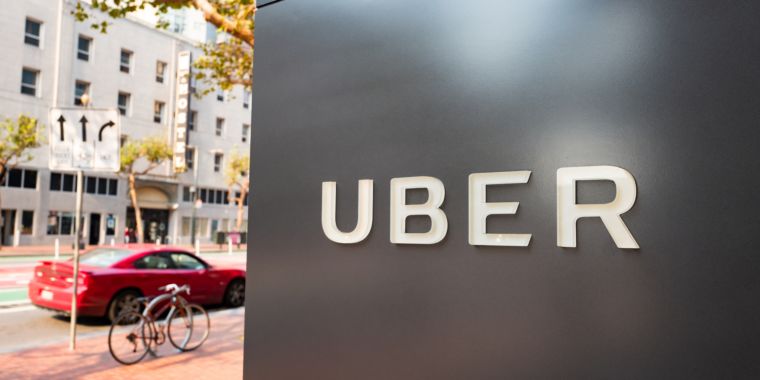

/ Headquarters of ride-sharing technology company Uber in the South of Market (SoMa) neighborhood of San Francisco on October 13, 2017.
Lyft and Uber drivers around the world are striking on Wednesday to protest low pay, arbitrary terminations, and other concerns. The protest comes just before Uber’s debut as a publicly traded stock on Friday.
The movement is decentralized, with drivers’ groups in different cities organizing strikes and protests. Drivers in some cities plan to disconnect for 24 hours, while in other cities drivers are striking for only a couple of hours. In New York, for example, drivers switched off their apps during the morning rush hour, from 7am to 9am.
There’s a list of driver demands on the website of Rideshare Drivers United, a Los Angeles-based drivers group. The drivers are seeking a 10-percent cap on Uber’s or Lyft’s share of each fare, an hourly minimum wage, and compensation for time spent traveling to pick up a passenger. They would also like to see a driver representative on the boards of Uber and Lyft, respectively.
Over the last five years, Uber and Lyft have engaged in an aggressive price war. In part, that has meant that the companies themselves take losses to lure in more passengers. But the companies have also lowered fares, which often means a reduction in drivers’ take-home pay.
Drivers also worry about being arbitrarily removed from the platform. Uber and Lyft closely monitor how customers rate their drivers. A driver whose average star rating falls too low gets automatically terminated from the platform. While the companies portray this as a consumer-friendly policy, full-time drivers complain that it puts them a few bad reviews away from losing their livelihoods. They would like Lyft and Uber to establish a formal process for removing a driver from the platform—giving drivers an opportunity to offer their side of the story.
Drivers may not have much leverage
The New York Post described this morning’s New York driver’s strike as “a flop.” “Cars appeared plentiful and surge pricing was scarce,” the Post’s Nicolas Vega writes. The situation seems to be similar in DC.
The nature of the ride-hailing market makes it challenging to organize Uber and Lyft drivers. A conventional factory has a bunch of full-time workers who work shoulder to shoulder. They get to know one another, making it easy to coordinate a strike and to pressure workers not to cross picket lines. Full-time workers often have specialized skills that can’t be replaced quickly, which means if the workers walk off the job, the employer may have no choice but to shut down the factory.
By contrast, Uber and Lyft drivers rarely meet other drivers on the job. Some drivers may not even know there’s a strike going on today, while others might not feel invested enough in the union’s goals to participate. Uber and Lyft are used to dealing with high driver turnover, so a prolonged strike might just cause Uber and Lyft to ramp up their recruiting efforts.
And those challenges come on top of a basic legal challenge: Uber and Lyft classify drivers as independent contractors, not employees. Labor law gives employees a straightforward process to form a union and bargain collectively with their employer. That process isn’t available to independent contractors.
Labor rights advocates have filed a number of lawsuits around the country seeking to establish that drivers should be considered employees, but there has been no clear resolution of the issue. And that means that for now, anyone trying to organize Uber and Lyft drivers can’t rely on the legal protections that normally come with collective bargaining.









